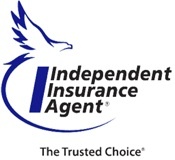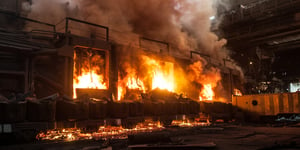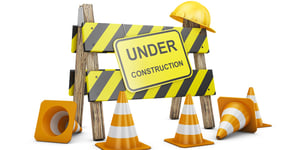 Vocational rehabilitation (VR) is one of the benefits of Workers’ Compensation Insurance. It can benefit both the injured employee and their employer by getting the employee back to work more quickly, thereby reducing the costs associated with Workers’ Compensation claims.
Vocational rehabilitation (VR) is one of the benefits of Workers’ Compensation Insurance. It can benefit both the injured employee and their employer by getting the employee back to work more quickly, thereby reducing the costs associated with Workers’ Compensation claims.
However, this benefit needs to be closely monitored to ensure that it continues to benefit the injured employee. If VR is no longer benefiting them, it could be costing your business.
What Is Vocational Rehabilitation?
Vocational rehabilitation as a WC benefit is designed to help injured employees return to work. Vocational rehabilitation services can vary depending on what the injured employee needs.
According to the National Rehabilitation Information Center (NARIC), some of the services a rehabilitating consultant (QRC) may provide include the following:
- vocational assessment and evaluation
- training
- upgrading of general skills
- refresher courses
- on-the-job training
- career counseling
- employment searches
- consulting with the employer for job accommodations or modifications.
Who Can Benefit From Vocational Rehabilitation?
Typically, VR is a WC benefit reserved for injured employees who have been out of work for an extended time. The process begins with a consultation with a QRC who can make recommendations regarding whether VR could be a benefit for the injured employee or not.
The QRC considers several factors before making a recommendation, including whether or not the injured employee will be able to return to the job they had before the injury, whether or not the injured employee is expected to be able to find gainful employment with the employer he or she was with when injured, and whether or not the injured employee is able to find gainful employment through VR services based on the treating physician’s opinion.
How Can Vocational Rehabilitation Be Monitored?
If vocational rehabilitation is approved, the claim handler must monitor the regular reports issued by the QRC. Those reports will include what services are being provided and how well the employee is recovering.
When reviewing those reports, the handler should consider several things. Are the employees’ physical limitations (new or ongoing) interfering with the completion of the rehabilitation plan? The employee could have a setback or could incur a new injury or disability that could stop him from completing the VR program.
Is the injured employee fully engaging in the VR? If the employee is not cooperating, such as missing appointments or not keeping in touch with his or her employer and/or QRC, he or she is not fully engaged in the program and probably won’t benefit from it.
Should the goals of the VR be changed? Perhaps the injured employee is not progressing as expected. Perhaps they’ve had a setback. If this occurs, it may be necessary to adjust the VR goals.
When is it Time to Terminate Vocational Rehabilitation?
If, while reviewing these reports, it appears that the injured employee is no longer benefiting from VR services, termination of those services should be considered. The individual asking for the termination of VR services has to prove that those services are no longer benefiting the injured employee.
Typically, grounds for terminating those services include the following:
- Death of the injured employee
- The Workers’ Compensation case is settled
- The injured employee is no longer participating in the services
- The injured employee returns to work with a minimal or no wage loss
Vocational Rehabilitation can often help an injured employee return to work more quickly, benefiting both employee and employer. However, Vocation Rehabilitation that is not monitored can end up costing employers big time.
That’s why it’s imperative that someone continues to monitor the injured employee’s status and level of cooperation and take steps to terminate VR services if evidence shows that the injured employee will no longer benefit from those services.
Here's How to Save Even More on Workers’ Compensation Insurance!
The independent agents at American Insuring Group specialize in Workers’ Compensation Insurance. We have the experience and the knowledge to help you lower your WC costs. Our independence allow us to shop and compare insurance providers and policies to get you the right protection at the best price.
Give us a call at (800) 947-1270 or (610) 775-3848 or connect with us online.
We provide worker's compensation insurance solutions in Philadelphia, Berks County, Lancaster, Harrisburg, Allentown, Pittsburgh, Erie, PA and beyond.



 Want to know how to lower your
Want to know how to lower your  Another way to save on Contractor Insurance is to work with an independent agent – like those at American Insuring Group – who will compare the cost and quality of insurance coverage among several different competing insurance companies.
Another way to save on Contractor Insurance is to work with an independent agent – like those at American Insuring Group – who will compare the cost and quality of insurance coverage among several different competing insurance companies. As a contractor or restaurant owner, you’re probably looking for ways to cut costs and improve your bottom line. A Business Owners Policy – or BOP – is a flexible and affordable way to save on
As a contractor or restaurant owner, you’re probably looking for ways to cut costs and improve your bottom line. A Business Owners Policy – or BOP – is a flexible and affordable way to save on  Do you think that
Do you think that  Return-to-work (RTW) programs help employers by helping retain experienced workers, reduce turnover, and control
Return-to-work (RTW) programs help employers by helping retain experienced workers, reduce turnover, and control  For many contractors, talking about
For many contractors, talking about  Every business comes with its share of risk, and a contracting business is no different. If anything, contractors face more than the average risk. Fortunately, there are things you can do to minimize or even eliminate many of those risks. Plus,
Every business comes with its share of risk, and a contracting business is no different. If anything, contractors face more than the average risk. Fortunately, there are things you can do to minimize or even eliminate many of those risks. Plus,  Understanding these three risks, minimizing them, and having the right insurance is vital for a healthy bottom line and the success of any contracting business.
Understanding these three risks, minimizing them, and having the right insurance is vital for a healthy bottom line and the success of any contracting business. As an employer, you may look at Workers’ Compensation (WC) Insurance as a necessary evil, but the truth is
As an employer, you may look at Workers’ Compensation (WC) Insurance as a necessary evil, but the truth is  Every business is at risk of a theft occurring. Fortunately, there are steps you can take to protect your assets, such as
Every business is at risk of a theft occurring. Fortunately, there are steps you can take to protect your assets, such as .jpg?width=300&name=Business_Interruption_Insurance%20(2).jpg) Do you have Business Interruption coverage for your business? No? Let me ask you this… What would you do if there was a fire in your building, and you were forced to shut down while repairs were made?
Do you have Business Interruption coverage for your business? No? Let me ask you this… What would you do if there was a fire in your building, and you were forced to shut down while repairs were made?



